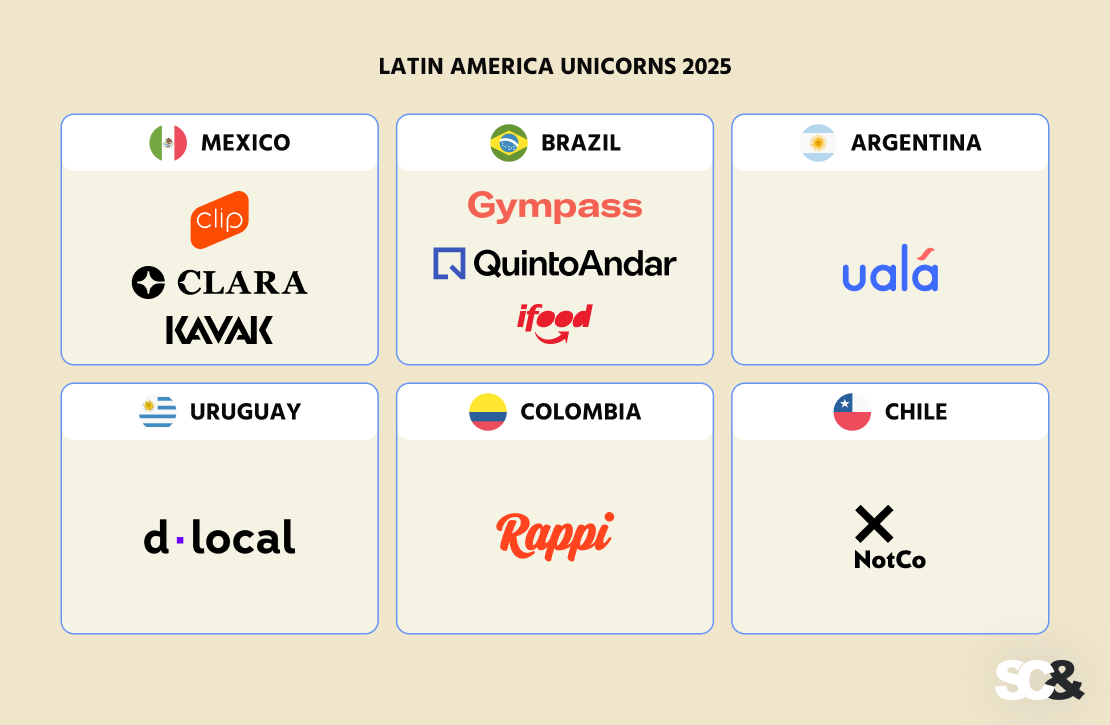Software Development in Latin America: Benefits, Alternatives, and Nearshore Options
Latin America (LATAM) is home to around 660 million people in 33 countries, which comprises over eight percent of the global population.
The region is rich in energy and mineral resources (including lithium, oil, copper, and iron ore), as well as advanced agricultural exports, such as soybeans, coffee, and beef.
In recent years, however, Latin America has gained strong momentum as a software development hub as more companies from the US and Canada turn to the region for nearshore outsourcing.
The main reasons for such popularity are evident: Latin American countries like Brazil, Argentina, Mexico, and Colombia have invested seriously in tech education and infrastructure, producing developers with a strong competency in modern programming languages and frameworks.
Nonetheless, like any other region, Latin America has its nuances — and businesses often consider outsourcing software development to Poland and other Eastern European countries, known for their great technical skillset and high standards of project delivery.
The Current State of Digitalization in Latin America
Thanks to the acceleration spurred by digitalization during the pandemic, where 13 million people across Latin America made their first online transaction, the region has witnessed a radical shift toward digitally-enabled services.
According to industry estimates, there are now around 2 million professional software developers in Latin America — a number that continues to grow as universities and training programs expand their IT curricula.
The most in-demand software development directions include e-commerce, mobile development, cloud platforms, emerging fields, and fintech, with many countries adopting cryptocurrency payments.
For instance, El Salvador has adopted Bitcoin as legal tender; meanwhile, Brazil and Mexico host some of the world’s fastest-growing neobanks, including Nubank and C6 Bank.
Large-scale adoption of digital payment systems has increased demand for integrations, cybersecurity, and real-time infrastructure; the explosive growth in e-commerce platforms, like Mercado Libre, has created sustained demand for backend, logistics, and analytics expertise.
Governments in Latin America are highly supportive of software development and digitalization. Most LATAM countries have enforced programs to encourage startups, reduce taxes for tech companies, and invest in AI and tech inventions.
For instance, Brazil announced a multi-billion real investment plan for AI development between 2024 and 2028, both at the level of infrastructure and education.
Argentina, in turn, implemented incentives through its “knowledge economy” law to promote IT services and startups. Mexico and Colombia launched technology parks and innovation funds to attract investment from abroad and spur local ecosystems.
By and large, the overall picture is one of impressive growth and opportunity. Latin America now boasts dozens of unicorn startups valued over $1 billion and is no longer seen merely as a source of affordable labor.
Benefits of Software Development in LATAM
Although Latin America represents a unified whole, it still consists of individual countries that differ in their economic levels, human capital, infrastructure, knowledge, and technology outputs. So what drives companies around the world to look there for developers and outsource to Latin America?

Lower Costs
One of the biggest advantages of working with Latin American developers is cost efficiency. On average, hourly rates are 40–60% lower than in the US or Canada, depending on the country and developer seniority.
For instance, a mid-level software engineer in Brazil or Mexico will charge $30-50/hour, whereas in the US this will cost $80-120/hour.
This allows startups and mid-sized businesses to develop high-quality software without exceeding budgets and allocate savings toward further development.
Time Zone Advantages
Unlike outsourcing to far-off regions, Latin American countries share similar time zones with North America, which supports real-time collaboration.
For instance, a company in New York can hold daily stand-up meetings with a team in Bogotá or Mexico City without scheduling outside working hours.
This overlap of working hours allows teams to swiftly respond to issues, run agile sprints, and maintain continuous communication, which reduces delays and miscommunication.
Skilled and Diverse Workforce
Latin America has a large and growing pool of experienced software developers. Popular areas of expertise include Java, .NET, PHP, Python, React, Angular, and mobile app development. Many developers also have experience with cloud platforms, DevOps practices, AI, and data analytics.
For example, fintech companies in the region, such as Nubank in Brazil and Ualá in Argentina, have developed innovative digital banking solutions, showing the depth of local technical talent.
Similarly, e-commerce platforms demand strong backend systems, mobile apps, and data analytics, providing opportunities for developers to gain real-world experience in large-scale systems.
Universities across the region also support this growth, producing graduates in computer science, AI, and cybersecurity.
Some countries, like Chile and Colombia, have tech-focused programs that align with international certifications, helping developers integrate into global teams.
Proximity to Clients
Being nearshore, Latin American teams can travel to client offices when needed, attend face-to-face sessions, or participate in workshops, unlike teams located across the globe. This physical proximity strengthens relationships, improves trust, and supports long-term partnerships.

Latin America Unicorns 2025
Challenges and Limitations of Software Development in Latin America
While the growth of the technology sector in Latin America and the Caribbean (LAC) is remarkable, it remains incomplete.
Despite the progress, according to the United Nations Program, the region still faces a shortage of competence in niche areas, uneven English proficiency, and variations in process maturity between countries.
Communication Differences and English Proficiency
Even though Latin American software developers share many professional values with North American teams, communication styles, decision-making approaches, and expectations around hierarchy can vary.
For example, in some countries, employees may be more indirect in giving feedback or reluctant to challenge senior opinions. This can occasionally lead to misunderstandings during sprint reviews or design discussions.
English proficiency still remains questionable. Though it has improved across Latin America, especially in São Paulo, Buenos Aires, Bogotá, and Mexico City, it can still vary by region and seniority level.
Junior developers or smaller teams may struggle with complex technical documentation, API integration instructions, or detailed client requirements.
Team Scalability and Top Talent Availability
Latin America has a large pool of developers, but scaling fast can be difficult in niche areas or for highly specialized roles. Senior engineers with experience in emerging technologies, such as blockchain, AI, cloud-native architectures, or cybersecurity, are in high demand.
For instance:
- A project that requires multiple senior AI engineers with cloud experience might take longer to staff in Argentina or Brazil because there is strong competition for tech talent.
- Rapidly growing startups often struggle to expand teams beyond 10–15 developers in a short time, especially for specialized skill sets.
Process Maturity and Standardization
Although many LATAM teams follow agile methodologies, the level of process maturity varies between companies. Some teams may not have fully established practices for QA, CI/CD, or code review, which can affect project consistency and speed.
Infrastructure and Legal Considerations
Although major cities have reliable internet and modern offices, infrastructure quality can vary, particularly in smaller cities or rural areas. Power outages, internet instability, or limited access to specialized hardware can occasionally disrupt remote work.
Additionally, legal frameworks differ between countries. Data protection, intellectual property, and contract enforcement may not be as consistent as in North America or Europe.
Companies working with Latin American teams may need to review contracts carefully and ensure compliance with international standards, especially when dealing with sensitive or regulated data.
Alternatives to Latin America
While Latin America offers affordable development services and convenient time zones, some projects require strong English proficiency and highly standardized processes.
For these cases, custom software development in Poland and other Eastern and Central European countries has become a strong alternative.
First of all, they produce a large number of developers with advanced degrees in computer science, software engineering, and related fields, many holding international certifications in cloud technologies, cybersecurity, and agile methodologies.
One more advantage of Eastern Europe is that teams in this region are comfortable with international collaboration, technical documentation, and business discussions, which reduces misunderstandings and accelerates decision-making.
This complements their familiarity with agile workflows, CI/CD practices, automated testing, and robust quality assurance processes.
Another benefit is timezone flexibility. Central and Eastern European teams can overlap with both US and Asian clients, making it easier to coordinate multinational projects.
A team in Warsaw, for example, can work with New York in the morning and communicate with Singapore in the evening, providing efficient collaboration across continents.
| Criteria | Latin America | Poland / Eastern Europe |
| Cost | Moderate to low | Moderate |
| Quality of Code | Good | Excellent |
| Timezone Compatibility (US) | Excellent | Good to Excellent (6-7 hours time shift with Atlantic time) |
| English Proficiency | Moderate to high | High |
| Team Scalability | Moderate | High |
| Data Security & Compliance | Varies by country | Strong to Extreme (EU and international standards) |
| Reliability | Good | Excellent |
Comparison of Nearshore Software Development Regions
How SCAND Helps with Software Outsourcing
In comparison with Latin America, the Eastern European tech hub may have slightly higher costs, but it offers greater reliability, process maturity, and easier access to specialized skills.
For example, SCAND, a prominent representative of the Poland IT industry, has over 25 years of experience in global IT outsourcing and successfully delivers software projects across web, mobile, desktop, and cloud platforms.
Our development teams work with a wide range of technologies, including .NET, Java, Python, React, Angular, and more, providing full-cycle product development from idea to launch.
Besides, we strictly adhere to all international standards such as ISO 27001 and GDPR, offering clients a secure and professional development environment.
Among our featured projects are a US fintech startup, which partnered with us to develop a multi-platform mobile banking app with AI analytics, a European e-commerce company, which worked with us to migrate legacy systems to the cloud, a freight logistics system built using Python and AI, a React Native healthcare app developed for a private medical practice, a blockchain platform for the logistics industry, and a big data solution on AWS designed to manage large volumes of enterprise data.
Above all, SCAND provides flexible engagement models to suit different project conditions, including dedicated teams for companies wanting a team that works exclusively on their projects over the long term and project-based cooperation for clients who need end-to-end delivery of a specific project.
To see what our clients say about working with us, check out our Clutch reviews and GoodFirms profile.
Additionally, we provide custom engagement models adapted to any unusual requirements, specialized expertise for projects, or complex workflows.
Frequently Asked Questions (FAQs)
Why should I consider Latin America to outsource software development?
Latin America has a large talent pool of developers who work at more affordable rates than in the US or Canada. Teams are experienced with lots of technologies, such as Java, .NET, PHP, Python, and modern front-end frameworks. Plus, the time zone overlap supports collaboration and communication.
What challenges might I face with LATAM teams?
Some challenges can include different levels of English proficiency, variations in development processes, or limited availability of highly specialized senior developers. In some cases, infrastructure or local regulations might require extra attention, especially for sensitive or regulated projects.
Why choose Poland or Eastern Europe instead?
Poland and other Eastern European countries offer highly skilled engineers, strong English communication, and well-established development processes. Overall, this combination makes them a great alternative for complex projects, long-term cooperation, or teams needing specialized expertise.
How can SCAND help with my project?
Our team is proficient in all popular tech stacks, from backend and frontend frameworks to mobile and cloud technologies, and has extensive experience in AI, data analytics, and secure enterprise solutions. Plus, SCAND provides adjustable engagement models to match your demands. You can work with dedicated teams to extend your in-house capabilities, choose project-based cooperation, or request a custom model.













